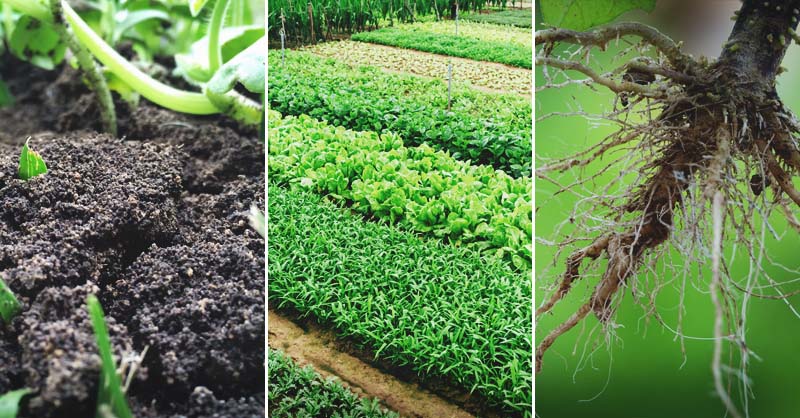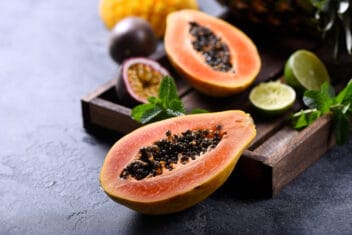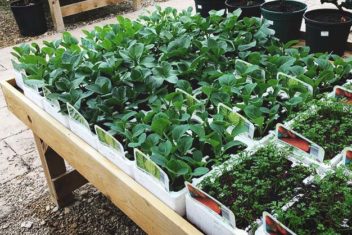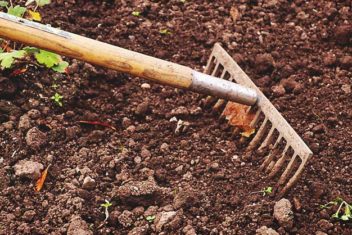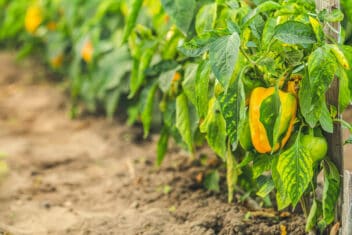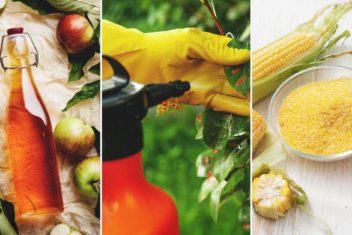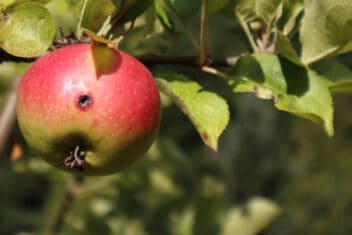I am one of those gardeners who experiments a lot. Now, I’m not a scientist, and I don’t hold myself to the scientific standard. That’s because, at the end of the day, my garden must grow enough food for me to live on for most of the year.
Regardless, I read as much scientific research as I can. I look at the trial data in test plots. I read accounts from experienced gardeners who have scrupulously applied methods to their gardens. Then, I play around on my own land.
My goal is to gain a better understanding of how plants grow, what they need to grow well, and how much of what is needed can be produced on my little homestead.
Through my research, I’ve come across several garden myths that are routinely repeated on gardening and homesteading blogs in ways that don’t quite mesh with the scientific research or live trial utility on these things.
So, today, I want to share some clarification on some of the backyard gardening advice and garden myths that many of us hear often but may misunderstand.
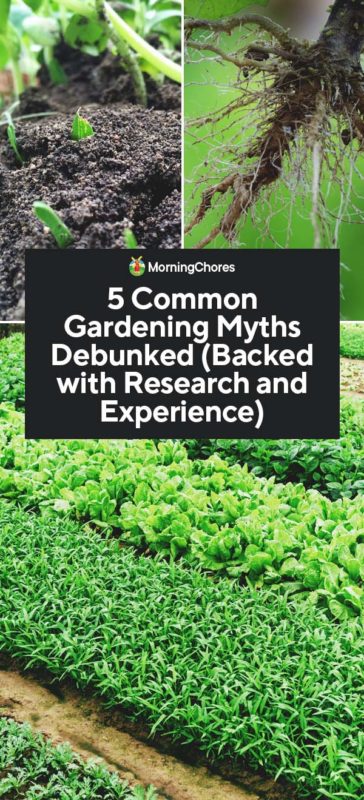
Garden Myths 1: Compost Adds Lots of Nutrients to Soil
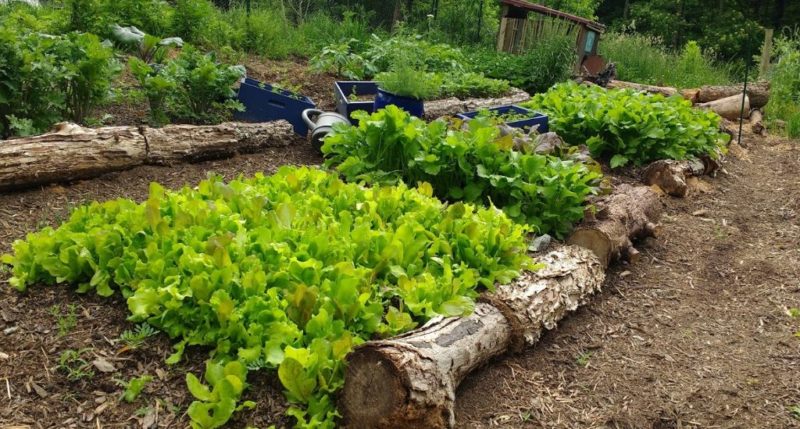
Gardeners have been using some variation of compost probably as long as we’ve been gardening as a way to grow food. We all know that our plants grow well when we add sufficient compost each year. So many of us assume compost must be adding lots of nutrients to our soil.
Most Compost has Low Nutrient Levels
Well, that’s not necessarily true. Most compost has an N-P-K analysis of 1-1-1 or less. When you think about the fact that most soil tests suggest home gardeners use a 10-10-10, or a 10-5-10 for gardens high in phosphorous, 1-1-1 isn’t a whole lot.
The truth is that compost adds a tiny bit of nutrients, particularly trace minerals rather than macronutrients. What compost really does is help plants to grow better in low nutrient environments by increasing the bacteria and fungi in the soil.
Bacteria and Fungi Do the Fertilizing
In an organic garden, if you apply compost regularly, don’t spray herbicides, pesticides, or fungicides, and don’t till too deeply, you create the perfect habitat for beneficial life forms to develop a nutrient network in your soil.
Those bacteria and fungi actually form relationships with your plants and help provide them the specific nutrients they need to grow. They do so by taking the not-fully decomposed matter left in your compost, soil, and air in the soil and convert all of that into nutrients.
Better than fertilizer, though, those nutrients are made in a specific form that allows your plants to easily uptake what they need for good health. Just like the bacteria in your gut, the colony of micro-critters pre-digest previously non-accessible nutrients and deliver them to plants.
Use This Understanding At Home
All you need to do to harness the power of compost in your garden is add lots of slow-made, well-aged compost to your garden each year. Older compost is much more useful for building bacteria and fungi populations than freshly made compost. Try to age your compost at least 6 months and preferably a year or more.
Avoid using chemicals or synthetic or strong fertilizers (e.g. nothing over 5-5-5) that can harm fungi and bacteria. Also, bacteria and fungi thrive in relationships with plant roots. So, keep your soil planted for as much of the year as you can.
If you do this, then compost can go a long way toward providing most of the fertility your plants need to stay healthy.
Garden Myths 2: Legumes Fix Nitrogen
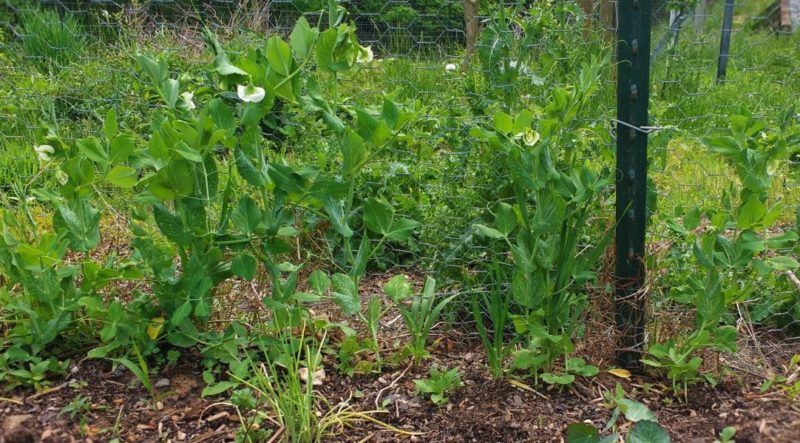
This idea of planting legumes to fix nitrogen is true, but only in some circumstances. Luckily, legumes have relatively low nitrogen needs in general. Sometimes even if your legumes don’t fix nitrogen, your soil has enough existing nitrogen to grow legumes without adding any extra.
The Role of Rhizobia
If you happen to have specific bacteria in your soil (called rhizobia) when you plant legumes, then those bacteria will form a relationship with your legumes. They will work with your legumes to fix nitrogen from the air.
What happens is that the rhizobia insert a node on the root of the legume and deposit small amounts of nitrogen in the nodes. In return, the plant gives the rhizobia sugars or carbohydrates produced by photosynthesis.
Nitrogen is Not Always Fixed
Now, the legumes use that stored nitrogen to feed themselves when they need it. However, research shows that if you kill the plant before it flowers and leaves that plant matter in the bed, then the nitrogen in the soil increases.
In effect, the nitrogen stored in the nodes and leaves will decay back into the soil and add nitrogen that other plants can use. However, if you let the plants flower and produce peas and beans and harvest those, the amount of nitrogen returned to the soil goes way down.
Use This Understanding At Home
In a nutshell, using legumes as cover crops and green manure does add nitrogen to the soil. To ensure you have the necessary rhizobia, you should use legume seeds that have been treated with inoculant that contains the specific bacteria that works best to fix nitrogen with your legume.
Not all soil has sufficient quantities of rhizobia without adding inoculant first. Trust me, I have dug up lots of clover and other legume roots on my property that have no nitrogen nodes. The nodes are tiny but visible to the naked eye on the roots. So, you can also check your legume roots to see how active your rhizobia are.
Also, planting legumes after heavy feeders like corn or cabbage does work well even if your legumes don’t get into a nitrogen-fixing state. Given their low nitrogen needs, legumes tend to produce better in depleted soil in general. They usually don’t produce well in high-nitrogen situations.
Garden Myths 3: You Should Perform a Soil Test Before Fertilizing

Low Humic Content, Poor Cation Exchange, Nitrogen Not Tested
I hear this one a lot these days. Since my state still offers free soil tests, I often hand people a soil box and give them instructions on how to perform a soil test as part of my master gardener volunteer duties. I also routinely help them interpret and apply their soil test results in their home gardens.
Now that you know that I am a soil test advocate, the real question is:
Does a home gardener really need a soil test every time before they fertilize? My answer is NO and here’s why.
Not Useful for Nitrogen
Basic, send-away, soil tests do not even test the nitrogen level in your soil. Nitrogen levels in the soil can change quickly.
A thunderstorm can send nitrogen through the roof. Two weeks of growing corn in hot weather can drop it dramatically. An influx of pill bugs in wood chips can raise nitrogen quickly too. As such, most reputable test providers don’t do that testing unless you perform a different test and pay extra for it.
The confusing part is that when you get your recommendations back, they usually give you nitrogen application rates. Those rates are generic guidelines suggested based on what you indicated you plan to grow in your test area.
If you said you were growing a lawn, the nitrogen recommendation would be exceptionally high. If you said you were growing a vegetable garden, they’d be moderate. If you plan to grow legumes, the recommendation would be low.
Not as Useful for an Organic Garden
Another thing to keep in mind is that organic gardens are high in compost and use communities of bacteria and fungi to provide food to plants. So, the test results for an organic garden usually show up as deficient on many fronts. However, plants will still grow very well in that garden.
This is because organic gardens don’t rely on N-P-K to feed plants the way that non-organic gardens do. Unless you use a laboratory that can give you soil test results for an organic garden, the findings and recommendations might not be meaningful and may ruin your soil if used.
Using This Knowledge at Home
There are still a few times when some kind of testing makes great sense.
Better Ways to Do Nitrogen Testing
As a first step, even the not-so-accurate home soil test kits will tell you if you have nitrogen overload. If one of those tests reads as having excess nitrogen, then plant something with high nitrogen needs such as corn or grass.
If that nitrogen hungry plant grows, then excess nitrogen was your problem, and you are solving it by drawing it out in your plants. If that doesn’t work, then you have a different problem, and a professional soil test or a plant tissue sample test may be necessary to determine which other nutrient is your real issue.
Often nitrogen issues are just a pointer toward other mineral imbalances. Also, because nitrogen is so inherently unstable in the soil, it is a much easier problem to solve than many other excess nutrient issues.
When You Start a New Garden
When you first start a garden, it’s a very good idea to get a professional soil test. In specific, there are a few things you want to look at.
– Soil pH and Micronutrients
The soil test will tell your pH and identify critical trace minerals such as magnesium and calcium. Your results will help you get your pH right for what you are growing and help you determine if you need to mineralize your soil or not.
The test will also tell you your quantities of the macronutrients phosphorous and potassium (P, K). If you are planting in an area that has not been worked before, there is a good chance that you have sufficient to high levels of P and K. If that’s the case, then you don’t want to apply high levels of those macronutrients at the outset or you can quickly create problems in your garden.
– Special P and K Considerations in the Organic Garden
Often with organic gardens, people don’t realize they have high P and K. They add a lot of quickly composted cow manure and chicken manure which can be high in both of those nutrients. So, that compost actually compounds the problem.
For organic gardens high in P and K, you need to age your compost a lot longer so that the excess nutrients leach out before you apply it to your garden. Or, you want to avoid compost that is made primarily from animal manures until your plants use up some of that P and K.
– Humic Content and Cation Exchange
Soil tests also tell your humic content and your cation exchange. These two factors have a big impact on how effective your plants will be at taking up nutrients. Gardens that are low in these two factors need more regular fertilizing, such as with liquid fertilizer.
– Re-Check
After several years of adding lots of compost, you may also want to do a soil test to see where your P, K, micronutrient, humic content, and cation exchange are at now. Consider this as a report card for your compost procedures. This can also guide you on whether better crop rotation is needed to draw out excess minerals in some of your beds.
A compost heavy garden can tolerate a wider range of pH values, so pH is not as much of a factor in the long-term. However, even compost-rich gardens need a pH between 5.5-7.0 for good yields on vegetables.
Garden Myths 4: Plants Need Deep Roots
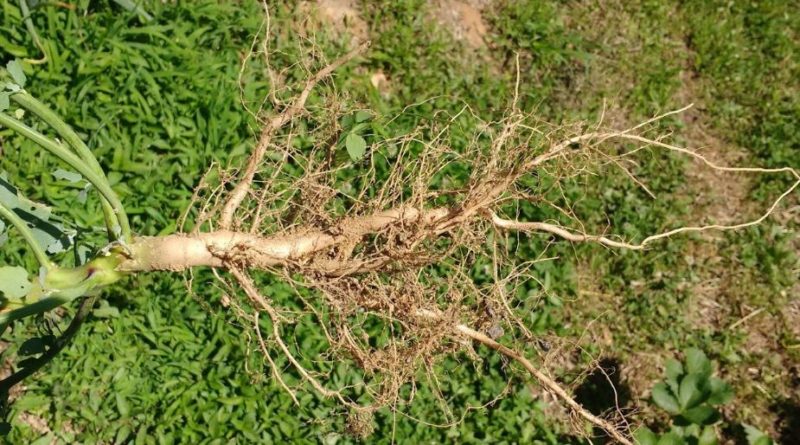
There’s a lot of talk about how plants need deep roots for good health. The implication here is that plants need deep soil to develop deep roots. The truth is, plants need nutrients and water. If they get those things, they can grow in all sorts of soil depths. That’s why you can even grow plants hydroponically without any soil at all.
Even perennials like tall forest trees can grow in shallow soil. In fact, most forests are shallow relative to tree size. Roots that can’t reach deep reach outward to find the nutrients and water they need.
Using This Knowledge at Home
If you don’t have deep soil, don’t worry. Fertilize and water a broader area around your plants. Also, fertilize and water a bit more often since shallower soils lose more nutrients to erosion and evaporation than deeper soil will.
Plentiful applications of compost and mulch will preserve moisture and nutrients in shallow soils. Also, using water-based fertilizers such as compost tea with slow-release fertilizer meals or granules will help ensure nutrient delivery when you need it in shallow soils.
P.S. It’s also a garden myth that plant root systems look like their plant tops. Plant roots go where they have to for nutrients, so plant roots look like an underground map of where your best nutrients are.
Garden Myths 5: Marigolds Repel Pests
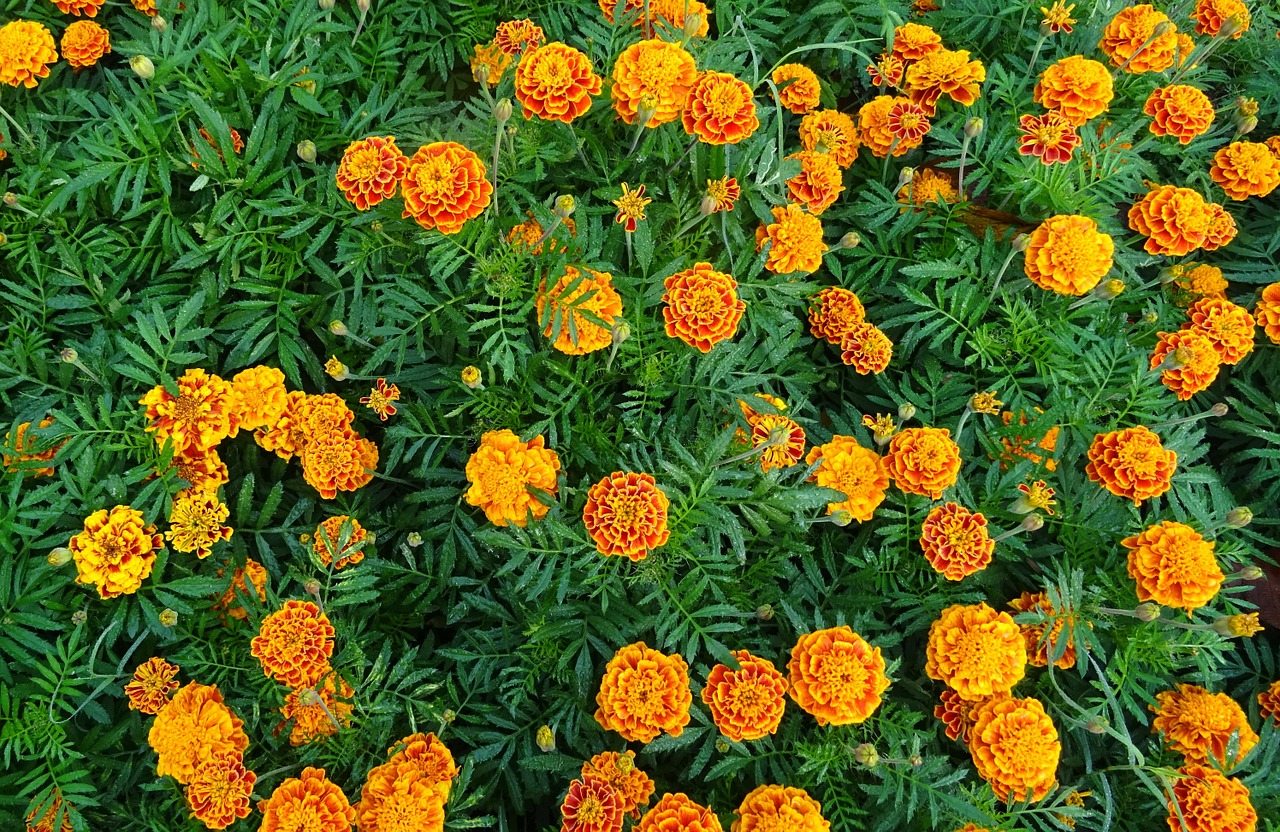
Marigolds are considered a must in most gardens and for a good reason. They’re beautiful and exceptionally easy to grow. They also seem to attract a lot of beneficial insects like pollinators to an area. However, do they really repel pests in the garden?
First of all, there are 4 different sub-families of marigolds in the Tagetes family. These are commonly referred to as French, Mexican/African, Signet, or Hybrid varieties. There are also multiple varieties of marigold within each sub-family.
Trap Plant
Many varieties of marigolds have actually been proven completely ineffective at pest control. In fact, many have been shown to be excellent pest attractants. In other words, quite a few varieties of marigold plants might be wonderful as a trap plant to draw pests away from more valuable plants.
Ineffective for Some Pests
In terms of repelling pests, though, there’s mixed information. Generally, marigolds have proven ineffective against cabbage moths, and carrot and onion pests. However,, they may be useful for some other pests.
Limonene Powerhouse
Recent studies of marigolds have determined that limonene, a terpene found in many kinds of marigold, is an effective deterrent against whiteflies in a greenhouse. Limonene though is found in lots of plants, including the incredibly easy to grow lemon balm (Melissa officinalis), and citrus fruit peels. So, this pest repellent quality is not exclusive to marigold.
Nematode Egg Reduction
The French-type marigold (Tagetes patula) has proven to be the most beneficial for controlling pesky nematodes. Basically, these marigold roots release a chemical (alpha-terthienyl) in the soil that prevents nematode eggs from hatching.
Depending on what kind of nematodes you have, different varieties of French marigold will work better than others. So, for the best benefits, you need to match your marigold variety to your nematode problem. Also, you need to plant the marigolds throughout your entire bed the year before you plant whatever plant you want to protect from the nematodes.
Use This Knowledge at Home
Taking off my scientific hat for a moment, I happen to be a huge advocate of using French-type marigolds in the garden. I find them hugely beneficial in reducing my pest problems.
I suspect that beyond proving garden myths correct with the recent discovery of the benefits of limonene and the long-known benefits of nematode suppression, there’s probably more to that potent Tagetes patula plant sub-family than we know yet. Science will probably catch-up to what we home gardeners know about the magic of marigolds at some point.
– More is Better
In the meantime though, the thing with marigolds is the more the merrier. If you are using them as a pest trap plant, planting en masse will work as a red carpet invite.
If you are using them to attract beneficial insects, then again planting several together will make more of an impact too. To suppress nematode eggs, putting more in your beds and planting them annually will have more long-term benefits.
Conclusion
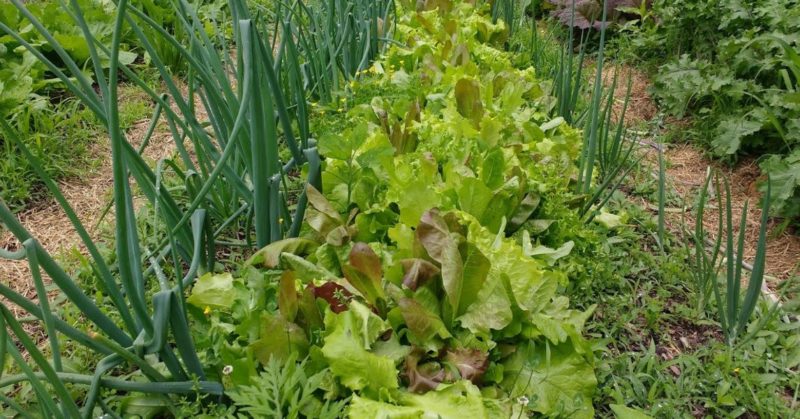
I believe in science. However, I also believe that many of us gardeners have intuitive skills to understand our soil and our plants. While I may have spent the brunt of this post debunking garden myths and some of our short-hand ways of explaining well-established garden wisdom, I still think there’s truth in the tried and true.
Compost works even if we don’t always understand how. Legumes grow in nitrogen-depleted soil, so they make a good option if you are short on nitrogen. Soil tests can be helpful, just not all the time. Deep soil is great, but don’t let shallow soil stop you from growing an amazing garden.
Finally, marigolds are gorgeous. Plant them because you love them and throw in a few French-type for good measure. Oh, and never stop being fascinated by garden myths and nature. Nature knows a lot more than we do about what works and doesn’t. Sometimes, observing nature is our best teacher.
